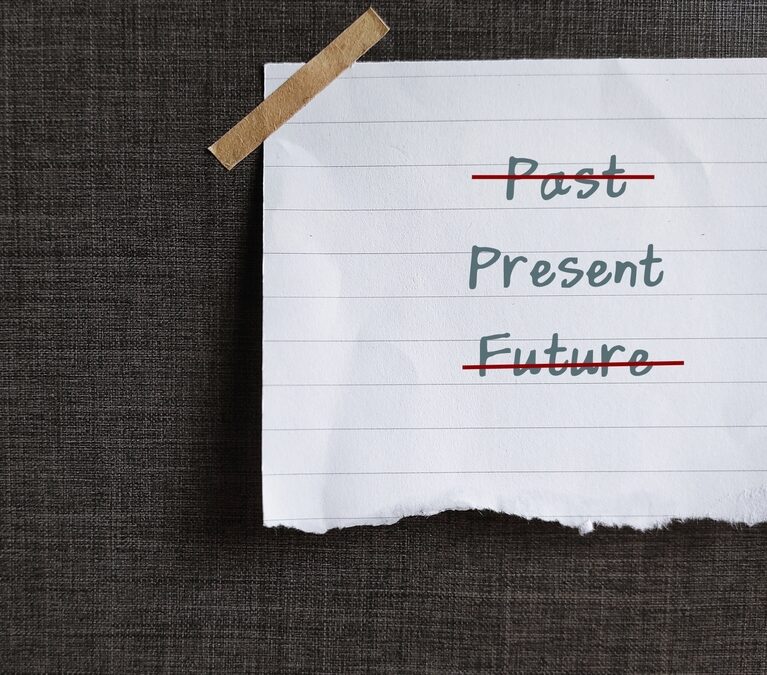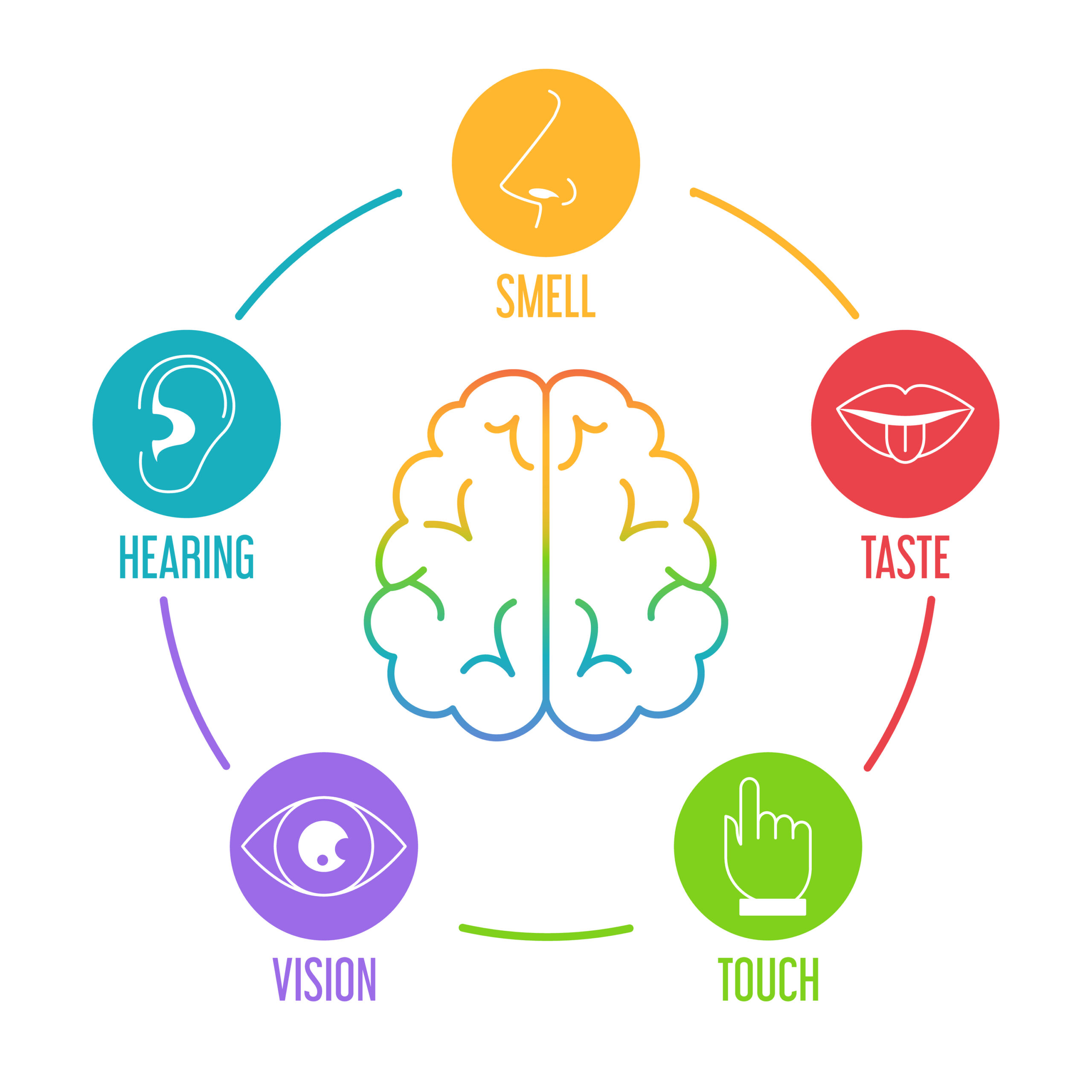What is Grounding?
Grounding strategies are techniques used to help individuals manage overwhelming emotions, thoughts, and memories by connecting them to the present moment. These techniques are designed to help individuals regain a sense of control when they feel anxious, stressed, or triggered. Grounding strategies often involve using the five senses to anchor oneself to the present moment. Some common grounding techniques include deep breathing, mindful meditation, visualization, sensory exercises such as touching or smelling objects, and self-soothing activities such as listening to music or taking a walk.
How Do They Help Us Focus On The Present?
Grounding strategies help us re-orient back to reality and the present moment. When we are highly emotional it can be easy to spiral with emotional thoughts, act out behaviourally, or feel trapped in our emotions. By grounding, your attention is brought to the here and now and thus away from the emotional thoughts, feelings, or behaviours. Although grounding does not solve your unpleasant emotions, it does provide you the opportunity to temporarily gain control over your feelings and prevent them from becoming more intense.
Grounding strategies are important because they can help individuals manage symptoms of anxiety, depression, trauma, and other mental health conditions. These techniques can help individuals feel more centered and present, reduce feelings of panic or overwhelm, and improve their ability to cope with stress. Grounding strategies can also be helpful for individuals who experience dissociation or feel disconnected from their surroundings. By helping individuals stay connected to the present moment, grounding strategies can improve overall mental health and well-being.
Grounding is flexible in that there are several different strategies that can be done anywhere, any time, and discreetly so no one else has to know. It is important to know that finding the right grounding strategies for you often requires that you engage in trial and error. Strategies that work for you may not work for someone else and vice versa.
The Difference Between Grounding, Soothing, and Distracting
While grounding aims to orient you to the present, self-soothing focuses on enjoying the present moment. You might ask yourself “What would comfort me right now?” and then engage in activities that satisfy that need. Self-soothing does not always need to be calming. Some individuals may find music with a heavy beat, an intense workout, or watching a suspenseful movie as a soothing strategy.
Distracting is different than grounding and self-soothing as it often serves as a strategy to escape the present moment. For example, if your mind is racing with anxious thoughts, distracting is often a strategy that brings relief. It is important to incorporate a sense of intentionality when engaging in distracting techniques. For example, if eating snacks is a distraction from replaying trauma memories in your head, it is important to eat mindfully and intentionally as opposed to just shoveling food in your mouth.
It is also important that you return to your emotions after distracting, grounding, or soothing, to understand what your emotions might have been communicating to you at that moment. Aka, you want to process your experience as opposed to pushing it aside. Not returning to process your emotional experience may lead to “shoving” your emotions which offers temporary relief but a long-term negative effect.
Three Types of Grounding Strategies
1. Sensory Grounding
Sensory grounding involves using your senses to connect with the present moment. This can include focusing on what you can see, hear, touch, taste, or smell. For example, you could look around the room and name five things you can see or listen for three different sounds you can hear. By doing this, you are bringing yourself into the present moment and calming down any intense emotions.
2. Mental Grounding
Mental grounding is a strategy that involves using your thoughts to ground yourself. This can include reciting a mantra or positive affirmation, counting backwards from a certain number, or imagining a peaceful place. By focusing your mind on positive and calming thoughts, you can reduce negative emotions and feel more centered.
3. Physical Grounding
Physical grounding involves using your body to connect with the present moment. This can include activities like deep breathing, yoga, or progressive muscle relaxation. By focusing on your body and the physical sensations you are experiencing, you can reduce stress and anxiety and feel more grounded. Physical grounding can also involve using objects like stress balls or fidget spinners to help you stay present and focused.
Examples and Practice Tips
Sensory Grounding Strategies
5-4-3-2-1 Exercise
The 5-4-3-2-1 exercise is a simple grounding technique that helps you focus on your surroundings and bring your attention to the present moment. It involves using your senses to identify five things you can see, four things you can touch, three things you can hear, two things you can smell, and one thing you can taste. By engaging your senses, you can shift your focus away from anxious thoughts and become more grounded in the present moment.
Breathing Techniques
Breathing techniques are another effective way to practice sensory grounding. Deep breathing exercises can help you slow down your heart rate and reduce feelings of anxiety or stress. One popular technique is called 4-7-8 breathing, which involves inhaling for four counts, holding your breath for seven counts, and exhaling for eight counts. Repeat this cycle for several minutes, focusing on the sensation of the air moving in and out of your body. By focusing on your breath, you can become more aware of your body and create a sense of calm. Box-breathing is a similar technique where you inhale, hold your breath, exhale, and hold again for 4 minutes (4-4-4-4). This technique both soothes the body and distracts the mind with counting.
Progressive Muscle Relaxation
Progressive muscle relaxation is a technique that involves tensing and relaxing different muscle groups throughout your body. By intentionally tensing your muscles and then releasing them, you can create a sense of physical relaxation and release tension. Start by tensing your toes for a few seconds, then relaxing them. Move up to your calves, thighs, stomach, chest, shoulders, arms, and finally your face. As you release each muscle group, focus on the sensation of relaxation spreading throughout your body. This technique can help you become more aware of your body and create a sense of calm and relaxation.
Mental Grounding Strategies
Mindfulness Meditation
Mindfulness meditation is a technique that can help you stay grounded by focusing your attention on the present moment. Start by finding a quiet and comfortable space where you won’t be disturbed. Sit or lie down with your eyes closed and focus on your breath. Notice the sensation of inhaling and exhaling and try to let go of any thoughts that come up. If your mind wanders, gently bring it back to your breath. You can also try body scan meditation, where you focus on each part of your body, starting at your toes and working your way up to the top of your head.
Combining meditation with action can be helpful if you struggle to stay still, quiet or calm. For example, going for a walk while listening to a meditation enacts your body and mind, working together to re-orient you to the present moment. If you are looking for a meditation, check out the Insight Timer application (free app).
Positive Affirmations
Positive affirmations are statements that you repeat to yourself to help shift your mindset and focus on the positive. Choose affirmations that resonate with you, such as “I am worthy,” “I am capable,” or “I am loved.” Repeat these affirmations to yourself throughout the day, either silently or out loud. You can write them down and place them in a visible location to remind yourself as well.
Visualization Techniques
Visualization techniques involve creating mental images to help you stay grounded and calm. Start by finding a quiet and comfortable space where you won’t be disturbed. Close your eyes and imagine a peaceful scene, such as a beach or a forest. Focus on the details, such as the sound of the waves or the rustling of leaves. You can also visualize yourself in a positive situation, such as succeeding at a project or achieving a goal. Imagine yourself in vivid detail, including how you feel and what you see. Visualization can help you feel more grounded and focused on your goals.
This is a technique commonly used in therapy sessions as well. Specifically, when feeling overwhelmed and wanting to go to a “safe” or “calm” place.
Physical Grounding Strategies
Yoga
One way to practice physical grounding is through yoga. This ancient practice involves holding different poses that can help connect you to your body and the present moment. Yoga is known for its physical, mental, and emotional benefits. When practicing yoga, you can focus on your breath, your body sensations, and the present moment. This can help you feel more grounded and centered.
Exercise
Another way to practice physical grounding is through exercise. Exercise can help you release tension and stress in your body, which can help you feel more grounded. When you exercise, you can focus on the movements of your body and the way it feels to move. This can help you connect to your physical sensations and feel more present in your body. This does not need to be done at a gym, you can engage in jumping jacks, push-ups, go for a run or walk, etc.
Hobbies or Activities
Engaging in hobbies or activities that you enjoy can also help you feel more physically grounded. When you do something that you love, you can focus on the present moment and the enjoyment that you are experiencing. This can help you feel more connected to your body and the world around you. Whether it’s gardening, painting, playing music, or cooking, finding an activity that you enjoy can help you feel more grounded and centered.
What are the benefits of Grounding Strategies?
Reduce Anxiety and Stress: Grounding techniques are an effective way to reduce anxiety and stress. When we feel anxious or stressed, we often get lost in our thoughts and emotions, and we may feel disconnected from our bodies and the present moment. Grounding strategies can help us to refocus our attention on the present moment and our physical sensations, which can help to calm our minds and reduce our feelings of anxiety and stress.
Improve Focus and Clarity: Grounding strategies can help us to think more clearly and make better decisions. Grounding techniques can be particularly beneficial for people who struggle with attention-deficit/hyperactivity disorder (ADHD) or other conditions that affect focus and concentration. Some examples of grounding techniques that can improve focus and clarity include guided imagery, visualization, and mindfulness meditation.
Enhance Emotional Regulation: When we feel overwhelmed by our emotions, we may act impulsively or engage in unhealthy coping strategies. Grounding techniques can help us to regulate our emotions by bringing our attention back to the present moment and our physical sensations. This can help us to become more aware of our emotional state and respond to our emotions in a more constructive way. By practicing grounding techniques regularly, we can develop greater emotional resilience and flexibility.
Evergreen’s Tips For Finding The Right Grounding Technique
1. Practice!
Practice grounding at any time, you do not need to wait till you feel overwhelmed or foresee unpleasant emotions arising. The more you practice, the more you will feel equipped to engage in and trust these strategies when you need them most. As with other skill development processes, practice is crucial.
2. Trial and Error
Try as many strategies as you can until you find the ones that work. Try not to be discouraged if some do not work for you, as it is unlikely all of them will. It is helpful to know a few different strategies as some may work with specific emotions or symptomology and not with others. For example, physical grounding techniques may be more helpful in reorienting someone who is extremely angry, whereas mental grounding strategies may be more successful for someone experiencing racing anxious thoughts. You can also try combining the different types of grounding and make your own!
3. Start early!
As with any other skill, coping tool, or emotion regulation technique, it is crucial to practice grounding before you experience unpleasant emotions. This way, when you’re experiencing an intense feeling your brain already has an established neural pathway related to grounding that it can pull from. Moreover, trying to introduce a new skill while simultaneously feeling overwhelmed and out of control can be extremely difficult and lead to a sense of helplessness.
If you or someone you know is looking to begin online therapy and you reside in Ontario, Canada, please do not hesitate to contact us at admin@evergreentherapeutics.ca. We offer a team of psychotherapists who treat a variety of mental health concerns with individuals, couples, and families. Visit our website www.evergreentherapeutics.ca for more information.







